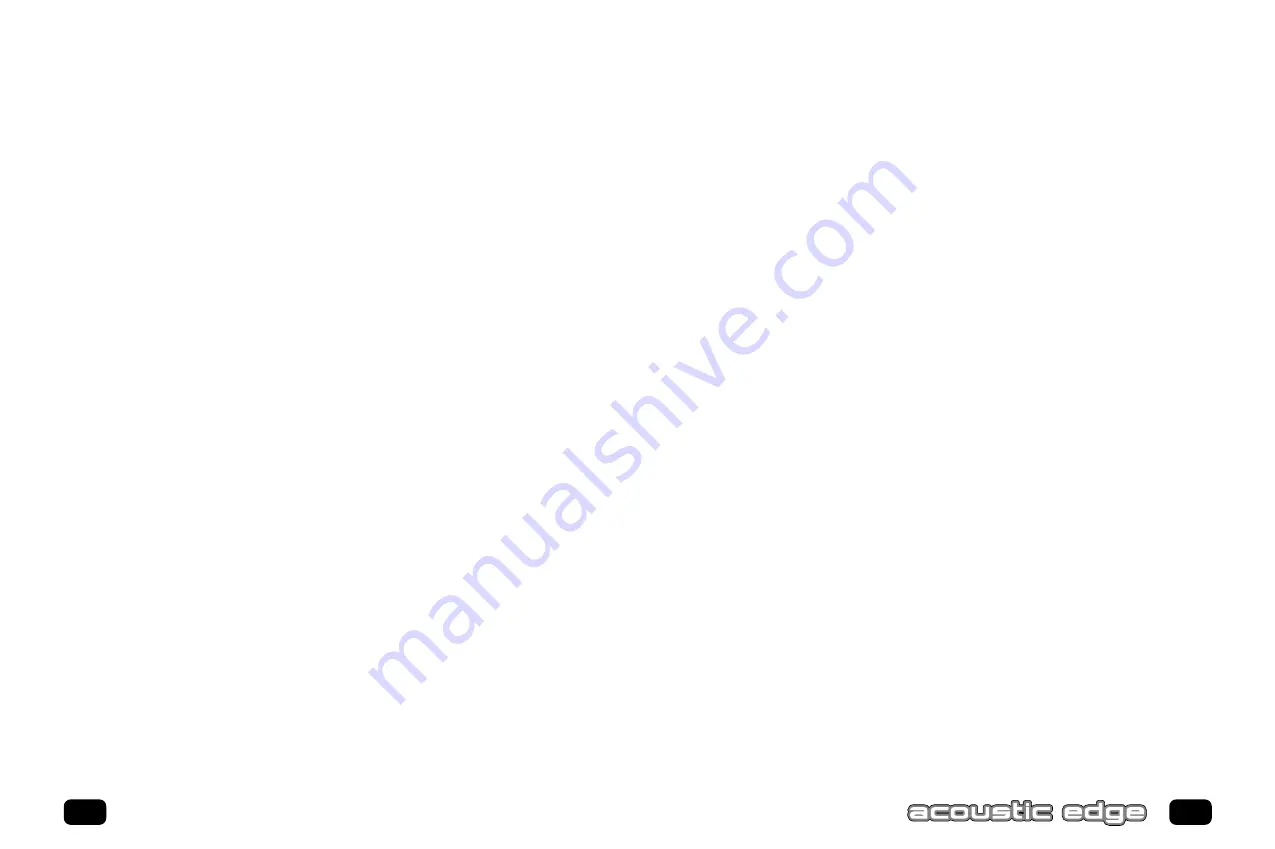
Internal Connections
Connectors for three line level analog inputs (Aux In,TAD, Analog CD In) and one
S/PDIF digital input (Digital CD In) are provided along the top of the sound card as
indicated in the picture on page 16. Use the 4 pin CD audio cable to connect the
analog audio output of your internal CD or DVD drive to the sound cards "Analog
CD In" connector.
The "Digital CD In" connector is not required for most applications because current
CD players and games typically use digital extraction (no cable required) or the
included "CD Analog Audio Cable" to bring CD audio into the sound card. If you
connect "Digital CD In" connector to your CD or DVD drive you will not be able to
use the external "S/PDIF In" jack on the "S/PDIF" cable which plugs into the rear of
the card.
Replace computer cover and reconnect the power cable, monitor and other devices.
S
OFTWARE
I
NSTALLATION
W
INDOWS
® 95/98/2000 I
NSTALLATION
Now that the hardware is installed, it is time to configure the drivers.
Plug and Play uses your system’s BIOS and the Plug and Play features of
Windows
®
95/98/2000 to allocate resources for Philips Acoustic Edge™.
Which version of Windows do you have?
Microsoft issued a maintenance release of Windows
®
95 referred to as OSR2.
This version shipped as the stock operating system on many PC’s. Newer and
recently upgraded PC’s will have the Windows
®
98 operating system. Other systems
will have the original Windows
®
95 or “Gold” version. The following procedure
describes installation using Windows
®
98/98SE. Windows
®
2000 screens are slightly
different but the procedure is the same as described. If you have older versions of
Windows
®
95 then the installation will be slightly different than described below.
19
18
C
ONNECTING TO
Y
OUR
A
COUSTIC
E
DGE
S
OUND
C
ARD
Speakers
Carefully insert the “Line Out” cable into the top DIN socket on the sound card
bracket making sure the key is properly aligned. If the cable does not easily insert
into the socket DO NOT FORCE IT IN, instead verify the key alignment is correct
and gently reinsert. The DIN sockets are the large round sockets just below the two
smaller jacks for “Line In” and “Mic”.
Next plug your front speakers or headphone into the lime colored 3.5mm stereo
jack at the other end of the cable. If you have a quad surround or 5.1 channel
speakers then plug your rear/surround speakers into the black colored 3.5mm stereo
jack on the same cable. If you have a 5.1 channel speaker system then also plug the
center/LFE speakers into the orange colored 3.5mm stereo speaker jack on the same
cable. If you are using a pair of digital (S/PDIF) speakers for your front or rear speak-
ers then plug them into the S/PDIF Out phono jack as indicated below.
S/PDIF
If you intend to use the external S/PDIF In or S/PDIF out connections then carefully
insert the “S/PDIF” cable into the bottom DIN socket on the sound card bracket
making sure the key is properly aligned. If the cable does not easily insert into the
socket DO NOT FORCE IT IN, instead verify the key alignment is correct and gently
reinsert. The DIN sockets are the large round sockets just below the two smaller
jacks for “Line In” and “Mic”.
To connect digital speakers, an AC3 or DTS decoder, receiver or other device with
an S/PDIF input to the S/PDIF Out of the sound card, plug it into the orange phono
jack on the end of this cable. To connect an external digital source with an S/PDIF
output to the sound cards S/PDIF In plug it into the brown phono jack on the end of
this cable. Do not simultaneously connect devices to both the brown external
S/PDIF In connection and the internal Digital/CD connector as they will interfere
with each other (see Internal Connections Below).
Line In, Mic In and MIDI/Joystick
External analog stereo sources with line level output can be connected to light blue
3.5mm stereo jack at the top of the sound card bracket. A microphone can be
connected to the pink 3.5mm mono jack. An analog or digital joystick and/or MIDI
devices can be connected to the large connector at the bottom of the bracket.
Installing Acoustic Edge
Summary of Contents for Acoustic Edge A581-T8
Page 4: ... ...
Page 36: ...68 Notes ...












































